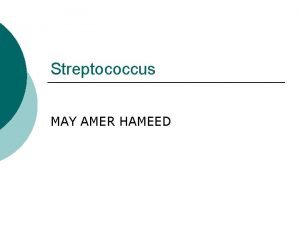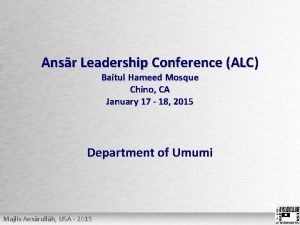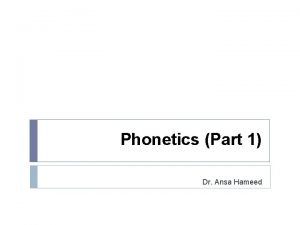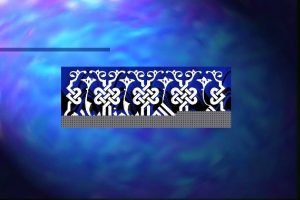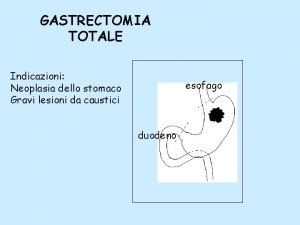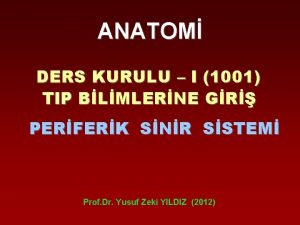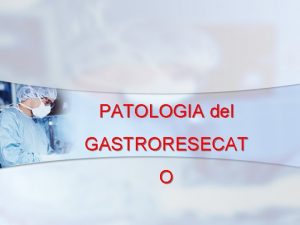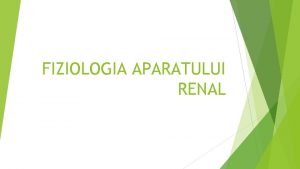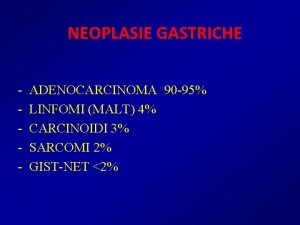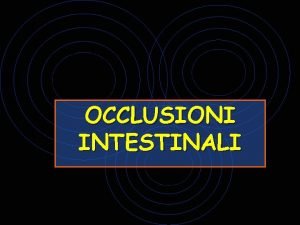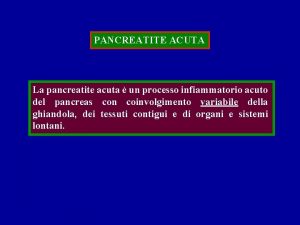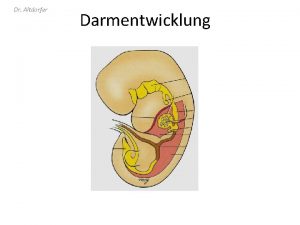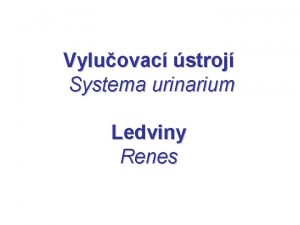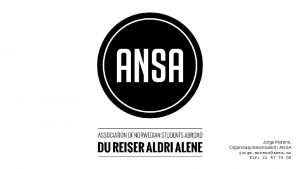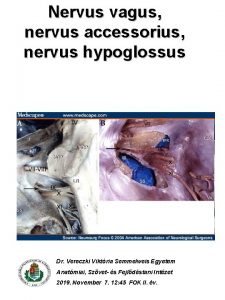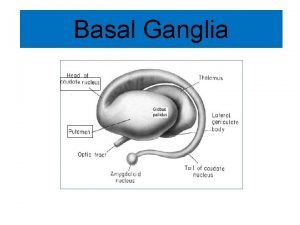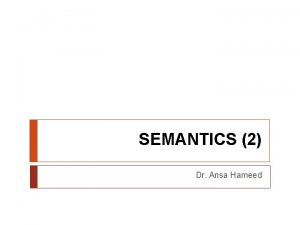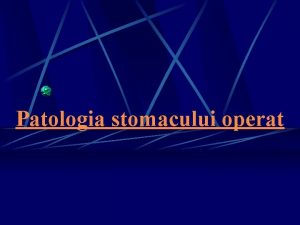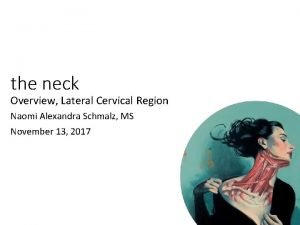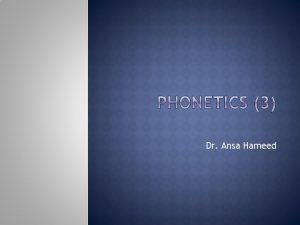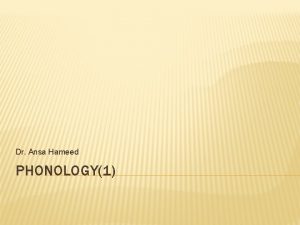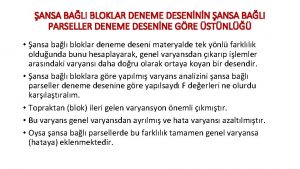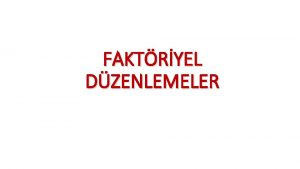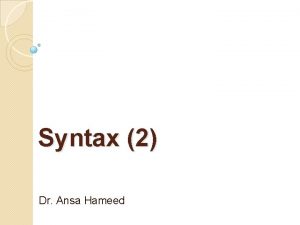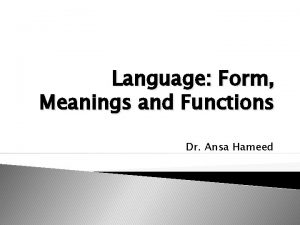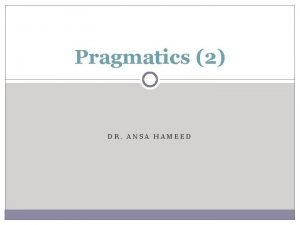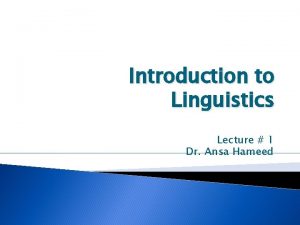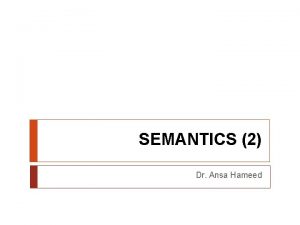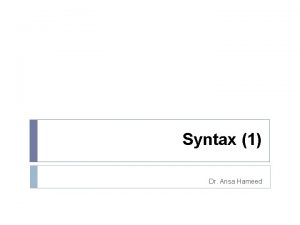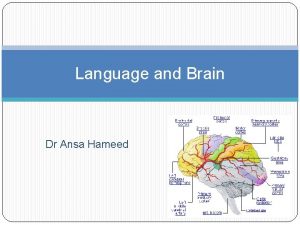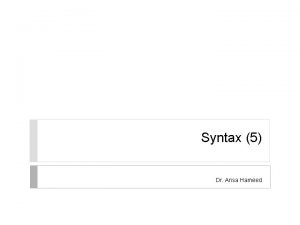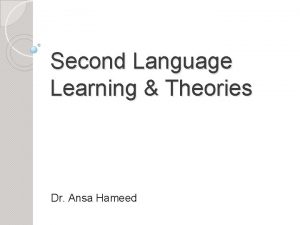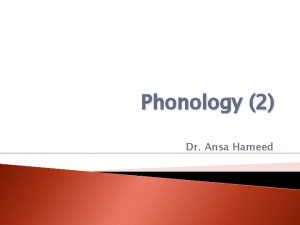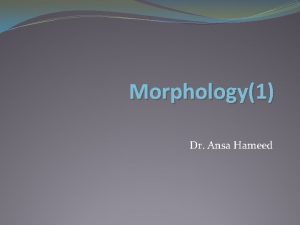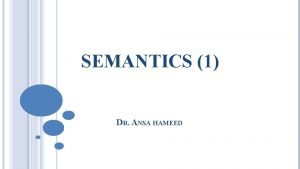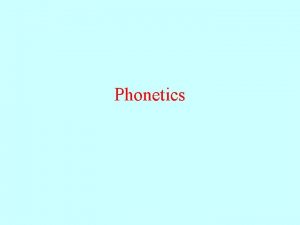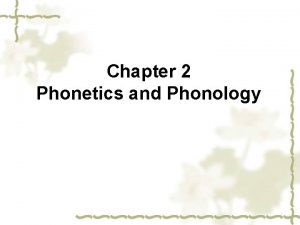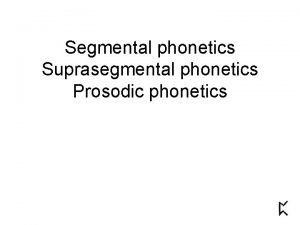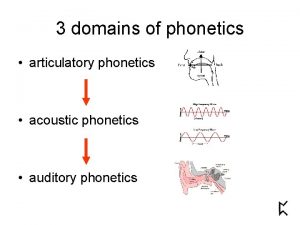Phonetics Part 1 Dr Ansa Hameed Phonetics The















![Places of Articulation � 1. Labials � [b], [p], [m], [f] and [v] are Places of Articulation � 1. Labials � [b], [p], [m], [f] and [v] are](https://slidetodoc.com/presentation_image_h/d6aa4d131ee16c785073220743c1b62f/image-16.jpg)
![Places of Articulation � 2. Alvelors � [t], [d], [s], [z], [n], and [l] Places of Articulation � 2. Alvelors � [t], [d], [s], [z], [n], and [l]](https://slidetodoc.com/presentation_image_h/d6aa4d131ee16c785073220743c1b62f/image-17.jpg)
![Places of Articulation � 3. Velars � [k], [g], [ŋ], [w]are velars. � When Places of Articulation � 3. Velars � [k], [g], [ŋ], [w]are velars. � When](https://slidetodoc.com/presentation_image_h/d6aa4d131ee16c785073220743c1b62f/image-18.jpg)
![Places of Articulation � 4. Interdentals � [Ɵ] and [ð] are interdentals. � When Places of Articulation � 4. Interdentals � [Ɵ] and [ð] are interdentals. � When](https://slidetodoc.com/presentation_image_h/d6aa4d131ee16c785073220743c1b62f/image-19.jpg)
![Places of Articulation � 5. Palatals � [ʃ] [ʒ] [ʧ] [ʤ] are palatals. � Places of Articulation � 5. Palatals � [ʃ] [ʒ] [ʧ] [ʤ] are palatals. �](https://slidetodoc.com/presentation_image_h/d6aa4d131ee16c785073220743c1b62f/image-20.jpg)















- Slides: 35

Phonetics (Part 1) Dr. Ansa Hameed

Phonetics �The study of physical properties of sound(s) is called Phonetics

Phonetics - The study of articulation, transmission and perception of speech sounds - Articulatory phonetics Acoustic phonetics Auditory phonetics -


Articulatory phonetics � is the study of the way the vocal organs are used to produce speech sounds � The number of vocal organs varies with languages: there are speech sounds that do not use an air-stream from the lungs (non-pulmonic sounds, e. g. clicks tut or tsk)

Acoustic Phonetics �is the study of the physical properties of speech sounds and how they are transmitted �Sound energy is a pressure wave consisting of vibrations of molecules in an elastic medium – a gas, a liquid, a solid; in this case, air – air particles are disturbed through the movements and vibrations of the vocal organs, especially the vocal folds. The process continues as a chain reaction for as long as the energy lasts. �Air particles move in the form of a wave: they are characterized by oscillation , frequency (hertz), amplitude and intensity (decibels).

Auditory Phonetics � is the study of the way people perceive speech sounds; the study of speech perception. � 1 st step – when sound waves arrive at the ear; � 2 nd step – transmission of sound along the auditory nerve to the brain

Articulatory Phonetics � The production of any speech sound involves the movement of an air stream. � Most speech sounds are produced by pushing the air out of the lungs through the mouth (oral) and sometimes through the nose (nasal). � Articulatory Phonetics deals with how the sounds are produced.

Three Dimensions of Articulation � Voicing � Place of Articulation � Manner of Articulation

Speech Organs

Voicing � Voiced and Voiceless � The air stream from the lungs passes through an opening between the vocal cords, the glottis. If the vocal cords are apart and the airstream is not obstructed at the glottis, the sounds produced this way are voiceless.

Voicing � If the vocal cords are together and the airstream forces its way through, the vocal cords vibrate and the sounds produced this way are voiced

Voicing � If you put a finger in each ear and say “zzzzz” you can feel the vibrations. (Voiced) � If you put a finger in each ear and say “sssss” you will not feel any vibration. (Voiceless) � When you whisper, you are actually making all the speech sounds voiceless

Voicing � Nasal and Oral Sounds � When the soft palate or velum is raised to block the passage of air stream through the nose and forced through the mouth, sounds produced this way are called oral. � If you force the air out of the nose by closing your lips or blocking the oral passage, sounds produced this way are called nasal.

Places of Articulation � Labials (bilabials, labiodentals) � Alveolars � Velars � Interdentals � Palatals � Glottals
![Places of Articulation 1 Labials b p m f and v are Places of Articulation � 1. Labials � [b], [p], [m], [f] and [v] are](https://slidetodoc.com/presentation_image_h/d6aa4d131ee16c785073220743c1b62f/image-16.jpg)
Places of Articulation � 1. Labials � [b], [p], [m], [f] and [v] are labials � When we produce [b], [p], or [m], we articulate them by bringing together both lips. These speech sounds are called bilabials � When we produce [f] and [v], we articulate by touching the bottom lip to the upper teeth. These speech sounds are called labiodentals
![Places of Articulation 2 Alvelors t d s z n and l Places of Articulation � 2. Alvelors � [t], [d], [s], [z], [n], and [l]](https://slidetodoc.com/presentation_image_h/d6aa4d131ee16c785073220743c1b62f/image-17.jpg)
Places of Articulation � 2. Alvelors � [t], [d], [s], [z], [n], and [l] are alveolars. � When we produce these sounds we raise the tip of our tongue toward the hard palate and touch the alveolar ridge. These speech sounds are called alveolars
![Places of Articulation 3 Velars k g ŋ ware velars When Places of Articulation � 3. Velars � [k], [g], [ŋ], [w]are velars. � When](https://slidetodoc.com/presentation_image_h/d6aa4d131ee16c785073220743c1b62f/image-18.jpg)
Places of Articulation � 3. Velars � [k], [g], [ŋ], [w]are velars. � When we produce these sounds we raise the back of our tongue toward the soft palate or the velum. These speech sounds are called velars
![Places of Articulation 4 Interdentals Ɵ and ð are interdentals When Places of Articulation � 4. Interdentals � [Ɵ] and [ð] are interdentals. � When](https://slidetodoc.com/presentation_image_h/d6aa4d131ee16c785073220743c1b62f/image-19.jpg)
Places of Articulation � 4. Interdentals � [Ɵ] and [ð] are interdentals. � When we produce these sounds we insert the tip of our tongue between the upper and the lower teeth. These speech sounds are called interdentals.
![Places of Articulation 5 Palatals ʃ ʒ ʧ ʤ are palatals Places of Articulation � 5. Palatals � [ʃ] [ʒ] [ʧ] [ʤ] are palatals. �](https://slidetodoc.com/presentation_image_h/d6aa4d131ee16c785073220743c1b62f/image-20.jpg)
Places of Articulation � 5. Palatals � [ʃ] [ʒ] [ʧ] [ʤ] are palatals. � When we produce these sounds we raise the front part of our tongue to a point on the hard palate just behind the alveolar ridge. These speech sounds are called palatals.

Manner of Articulation � Stops � Fricatives Obstruents � Affricates � Nasals � Liquids � Glides Sonorents

Manner of Articulation � Obstruents � An obstruent is a consonant sound formed by obstructing the outward airflow, causing increased air pressure in the vocal tract. � Obstruents are those articulations in which there is a total closure or a stricture causing friction, � Obstruents are subdivided into stops, fricatives, and affricates.

Manner of Articulation � Obstruents � Stops � When the air stream enters the oral cavity it may be stopped, obstructed, or flow freely. � When the air is completely stopped for a brief period of time, these speech sounds are called stops. � [b], [p], [t], [d], [k] and [g] are stops

Manner of Articulation � Obstruents � Fricatives � When the air is not stopped completely but is obstructed from flowing freely, these speech sounds are called fricatives. � [f] [v] [θ] [ð] [s] [z] [ʃ] [ʒ]

Manner of Articulation � Obstruents � Affricates � Some sounds are produced by a stop closure followed immediately a slow release of the closure as in a fricative. These speech sounds are called affricates. � [ʧ] and [ʤ] are affricates.

Manner of Articulation � Sonorants are those articulations in which there is only a partial closure or an unimpeded oral or nasal scape of air. � English has the following sonorant consonantal phonemes: /l/, /m/, /n/, /ŋ/, /ɹ/, /w/, /j/

Manner of Articulation � Sonorants � Nasals � A nasal consonant is produced with a lowered velum in the mouth, allowing air to escape freely through the nose. The oral cavity still acts as a resonance chamber for the sound, but the air does not escape through the mouth as it is blocked by the tongue � [m], [n] and [ŋ] are nasals

Manner of Articulation � Sonorants � Liquids � When there is some obstruction of the air stream but not enough to cause friction, these speech sounds are called liquids � [l] [ɹ]

Manner of Articulation � Sonorants � Glides � When there is little or no obstruction of the air stream in the mouth, these speech sounds are called glides or semi-vowels � [w] [j]


�IPA � The International Phonetic Association (IPA; in French, Association phonétique internationale) is an organization that promotes the scientific study of phonetics and the various practical applications of that science. � Purpose Guiding principle: one sound = one symbol

� IPA � The IPA’s major contribution to phonetics is the International Phonetic Alphabet —a notational standard for the phonetic representation of all languages. The acronym IPA is used to refer to both the association and the alphabet.

The International Phonetic Alphabet

Recap � Phonetics? ? ? � 3 types of Phonetics � Articulatory Phonetics � (Places, Manner, Voicing) � Next Week: � Distinctive Feature Analysis � Acoustic and Auditory Phonetics � Vowels and Consonants � Phonetic Transcription

References � Fromkin, Rodman & Hyams. (2007). Language Nature, Psychology and Grammatical Aspects. US: Wadsworth � Jones, Daniel. (1966). The Pronunciation of English. Cambridge University Press. � Jones, Daniel. (1972). An Outline of English Phonetics. Cambridge University press. � Poole, Stuart C. An Introduction to Linguistics. GB: Palgrave.
 Bacterial capsul
Bacterial capsul Hakim abdul hameed
Hakim abdul hameed Chino masjid
Chino masjid Part 1 phonetics
Part 1 phonetics Aifs
Aifs Ansa alla roux
Ansa alla roux Plexus cervicalisin en önemli siniri
Plexus cervicalisin en önemli siniri Malthusin ansa
Malthusin ansa Billroth 2 complicanze
Billroth 2 complicanze Fiziologia rinichiului
Fiziologia rinichiului Borrmann classificazione
Borrmann classificazione Ansa intestinale
Ansa intestinale Ansa sentinella pancreatite
Ansa sentinella pancreatite Lig phrenicolienale
Lig phrenicolienale Ascendentní pyelografie
Ascendentní pyelografie Ansa forsikring
Ansa forsikring Vms anatomia
Vms anatomia Lentiform nucleus
Lentiform nucleus Semantic features examples
Semantic features examples Sd dumping
Sd dumping Scm lymph nodes
Scm lymph nodes Lời thề hippocrates
Lời thề hippocrates đại từ thay thế
đại từ thay thế Quá trình desamine hóa có thể tạo ra
Quá trình desamine hóa có thể tạo ra Công thức tính thế năng
Công thức tính thế năng Môn thể thao bắt đầu bằng từ chạy
Môn thể thao bắt đầu bằng từ chạy Khi nào hổ mẹ dạy hổ con săn mồi
Khi nào hổ mẹ dạy hổ con săn mồi Thế nào là mạng điện lắp đặt kiểu nổi
Thế nào là mạng điện lắp đặt kiểu nổi Hình ảnh bộ gõ cơ thể búng tay
Hình ảnh bộ gõ cơ thể búng tay Các loại đột biến cấu trúc nhiễm sắc thể
Các loại đột biến cấu trúc nhiễm sắc thể Vẽ hình chiếu đứng bằng cạnh của vật thể
Vẽ hình chiếu đứng bằng cạnh của vật thể Biện pháp chống mỏi cơ
Biện pháp chống mỏi cơ Phản ứng thế ankan
Phản ứng thế ankan Gấu đi như thế nào
Gấu đi như thế nào Thiếu nhi thế giới liên hoan
Thiếu nhi thế giới liên hoan điện thế nghỉ
điện thế nghỉ
